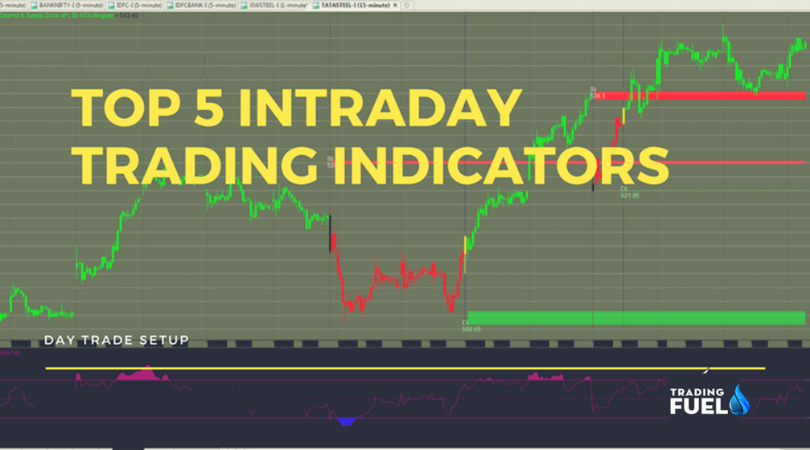In the high-stakes world of option trading, where fortunes can be made and lost in the blink of an eye, it’s essential to equip yourself with the tools that give you an edge. Technical indicators are precisely those tools, providing traders with invaluable insights into market trends and potential trading opportunities. But with a myriad of indicators available, which ones stand out as the most powerful weapons in an options trader’s arsenal? Embark on this comprehensive guide and discover the best technical indicators for option trading, unlocking the secrets to unlocking explosive profits.

Image: www.youtube.com
Delving into the Technical Indicators Landscape
Technical indicators are mathematical formulas applied to historical price data to identify patterns and trends. They help traders decipher market sentiment, predict future price movements, and make informed trading decisions. While countless indicators exist, certain ones have consistently proven their worth for options traders, offering exceptional insights into market dynamics.
Spotlight on the Heavyweights of Technical Indicators
Bollinger Bands: Bounding the Price Action Zone
Envision a triad of lines—an upper band, a lower band, and a middle band—that encapsulate most of the price action. These are Bollinger Bands, a versatile indicator that measures market volatility and identifies potential overbought or oversold conditions. When prices break outside the bands, it often signals a breakout trade.

Image: www.youtube.com
Moving Averages: Smoothing Out the Noise
Moving averages help eliminate market noise by smoothing out price fluctuations, revealing underlying trends. By plotting the average price over a specific period (e.g., 50-day, 100-day), traders gain a clearer picture of the market’s general direction. Crossovers between moving averages can indicate trend reversals.
Relative Strength Index (RSI): Gauging Momentum
The RSI, a momentum oscillator, ranges from 0 to 100, indicating whether an asset is overbought (above 70) or oversold (below 30). Traders use it to identify potential trend reversals and time entries and exits accordingly. Divergence between RSI and price action can signal impending trend changes.
Stochastic Oscillator: Uncovering Price Extremes
Another momentum indicator, the Stochastic Oscillator, compares the closing price to the price range over a specific period. It fluctuates between 0 and 100, indicating overbought and oversold conditions, respectively. Traders utilize it to identify potential trend reversals and exhaustion levels.
Ichimoku Cloud: A Multifaceted Trend Analyzer
The Ichimoku Cloud is a comprehensive indicator that combines several lines and bands to provide a holistic view of market momentum, support, and resistance. It helps traders identify trend direction, anticipate reversals, and assess market volatility. The cloud itself, formed by the intersection of two moving averages, can indicate bullish or bearish conditions.
Beyond the Basics: Advanced Indicators for Skilled Traders
Volume Profile: Mapping Trading Activity
Volume Profile analyzes the distribution of trading volume at different price levels. It reveals areas of support and resistance, highlighting large trader activity. Traders use it to identify potential trading zones and anticipate price movements based on volume concentration.
Delta: Assessing Option Sensitivity
Delta is a Greek letter used to measure the sensitivity of an option’s price to underlying price changes. Option traders rely on it to hedge their positions and calculate potential profits and losses. Understanding Delta is crucial for managing risk effectively.
Open Interest: Tracking Trading Activity
Open Interest represents the number of outstanding option contracts for a specific strike price and expiration date. It provides insights into market sentiment, trading activity, and potential supply and demand imbalances. Traders use it to identify potential trend changes and high-volume trading areas.
Best Technical Indicators For Option Trading

Image: www.tradingfuel.com
Harnessing the Power of Technical Indicators
While technical indicators are invaluable trading tools, it’s essential to remember that they are not foolproof. No single indicator can consistently predict the future with certainty. The key to successful option trading lies in combining multiple indicators, considering market context, and managing risk prudently.
To effectively incorporate technical indicators into your trading strategy, follow these guidelines:
- Consider Multiple Time Frames: Analyze indicators on different time frames (e.g., daily, weekly, monthly) to identify long-term trends and short-term trading opportunities.
- Combine Indicators: Don’t rely solely on one indicator. Combine several indicators that provide complementary insights to enhance your analysis.
- Understand Market Context: Consider news events, economic data, and overall market sentiment when interpreting technical indicators.
- Manage Risk Effectively: Use stop-loss orders and position sizing to manage risk and protect your capital.
By mastering the best technical indicators for option trading and applying them strategically, you can gain a significant advantage in the market. Remember, it’s a continuous learning process that requires patience, discipline, and a thirst for knowledge. By embracing these principles, you can unlock the full potential of technical analysis and unlock explosive profits in the exciting world of option trading.






